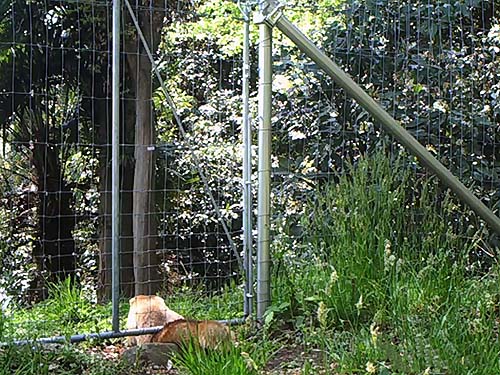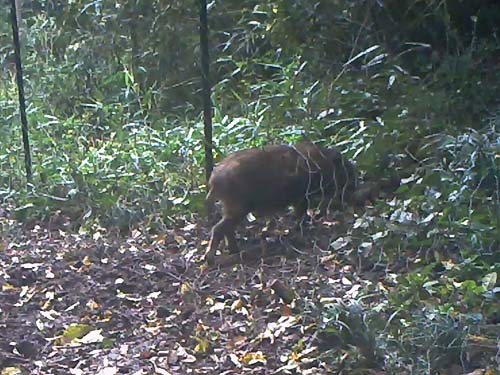Home > Research > Research Results > Research Results 2020 > Animals who pass through, who do not pass through, and who break three types of deer fences
Update:January 9, 2020
Main content starts here.
Animals who pass through, who do not pass through, and who break three types of deer fences
| Article title |
(1) A case study of installing and maintaining the deer/boar fence in suburban forest (2) Effects of deer fences on the movement of other mammals |
|---|---|
| Author (affiliation) |
(1) Noriko Tamura (a), Miu Takeshita (b), Karin Takayama (b), Teruki Oka (c), Toru Koizumi (a) (a) Tama Forest Science Garden, FFPRI, Hachioji, Tokyo, Japan. (b) Tokyo University of Agriculture, Setagaya-ku, Tokyo, Japan. (c) Department of wildlife biology, FFPRI, Tsukuba, Ibaraki, Japan. (2) Karin Takayama (a), Miu Takeshita (a), Noriko Tamura (b), Toru Koizumi (b), Koji Yamazaki (a) (a) Tokyo University of Agriculture, Setagaya-ku, Tokyo, Japan. (b) Tama Forest Science Garden, FFPRI, Hachioji, Tokyo, Japan. |
| Publication Journal |
(1) FOREST PESTS, 67(5): 3-11, National Federation of Forest Pests Management Association, Japan, September 2018 (2) FOREST PESTS, 68(5): 3-10, National Federation of Forest Pests Management Association, Japan, September 2019 |
| Content introduction |
Forest damage caused by Sika deer (Cervus nippon) is a problem in many regions. Although deer fences have been installed to protect afforestation areas against the damage caused by deer feeding, severe damage to these fences can often nullify this protective effect. Many wild animals other than Japanese deer inhabit forests who can also damage deer fences. These fences could restrict the movement of Red List species in the area such as the red fox (Vulpes vulpes), Japanese hare (Lepus brachyurus), and Japanese badger (Meles anakuma). Therefore, three types of fences (electric, metal, and wire net) were installed over a total length of approximately 2.2 km in the forest of Tama Forest Science Garden located in west Tokyo. The behavior of animals was monitored using 22 sensor cameras installed along these fences. The electric fence prevented the movement of deer, wild boar (Sus scrofa), and Japanese monkey (Macaca fuscata). However, red fox and Japanese badger were able to pass through the fence without touching the wires. Therefore, electric fence appears to have little influence on animals to be protected. Only small species such as rodents could pass through the metal fence (mesh size 5 × 7 cm). There was a gap between the gate and the ground, wherein Japanese badgers could dig. This then became a pathway for all animals except for the adult wild boar and deer. The wire net was frequently broken by wild boar after its installation, and the opening that was created became a pathway for the movement of all animals except for deer. Thus, the following conclusions were drawn :
Therefore, the installation of a deer fence requires an understanding of the habitat of local animals, in addition to appropriate selection, maintenance, and management of the fence.
Photo 1: Japanese badger (Meles anakuma) going through the gap under the door of the metal fence.
Photo 2: Wild boar (Sus scrofa) passing through the wire net. |
Copyright © Forest Research and Management Organization. All rights reserved.


